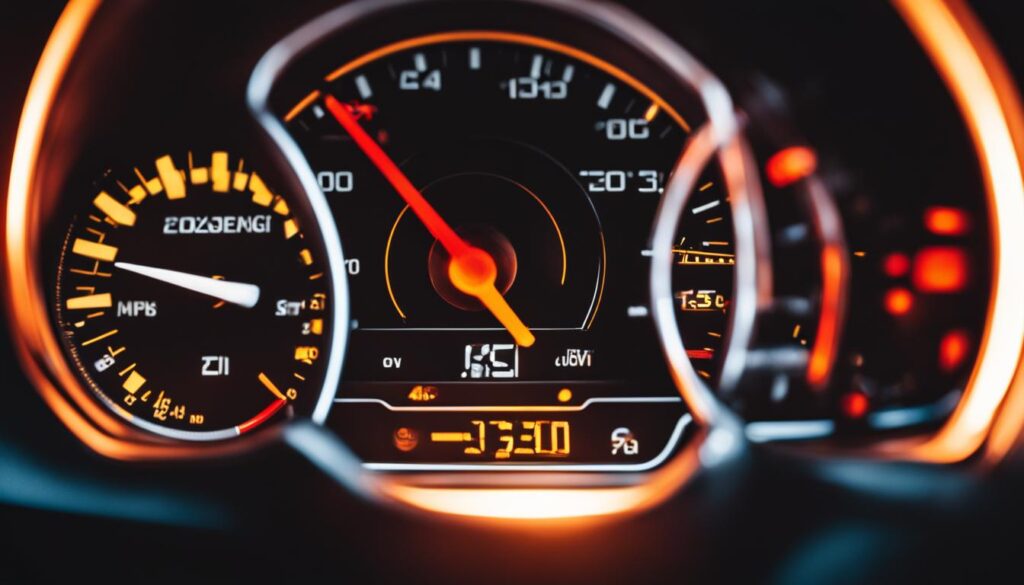The oxygen sensor, also known as the O2 sensor, is a crucial component of a vehicle’s exhaust system. It measures the amount of oxygen in the exhaust and helps maintain the proper air-fuel ratio for optimal emissions. However, like any other part, the oxygen sensor can fail over time due to various reasons.
There are several symptoms that can indicate an oxygen sensor failure. These include the check engine light coming on, poor fuel efficiency, rough engine idle or misfiring, and sluggish engine performance. It’s important to diagnose and troubleshoot the issue properly.
Understanding the common causes of oxygen sensor failure can help vehicle owners take preventive measures and address any issues promptly. One common cause is the aging and high mileage of the sensor, as it tends to lose sensitivity and degrade over time. Contamination from carbon buildup, antifreeze or silicone residue, and the use of improper gasoline can also cause sensor malfunction. Additionally, high temperatures in the exhaust system and irregular maintenance practices can contribute to sensor deterioration.
If an oxygen sensor replacement is necessary, it’s important to identify the faulty sensor correctly and follow the proper steps for replacement. This includes disconnecting the wire connection, unscrewing the old sensor, applying anti-seize compound to the new sensor, and tightening it to the recommended torque.
Key Takeaways:
- Oxygen sensor failure can cause various symptoms such as the check engine light coming on, poor fuel efficiency, rough engine idle, and sluggish engine performance.
- Aging, contamination, high temperatures, and irregular maintenance are common causes of oxygen sensor failure.
- Proper diagnosis and troubleshooting techniques are essential to identify and address the underlying issue.
- If an oxygen sensor replacement is necessary, it’s important to follow the correct steps to ensure proper installation and functionality.
- Regular maintenance practices, such as replacing air filters and spark plugs, can help prevent oxygen sensor failure.
Symptoms of Oxygen Sensor Failure
A failing oxygen sensor can exhibit several symptoms that indicate its failure. These symptoms include:
- Persistent check engine light
- Poor fuel economy
- Rough engine idle or misfiring
- Sluggish engine performance
It’s important to note that these symptoms can also be caused by other issues, so proper diagnosis is necessary. To troubleshoot an oxygen sensor, you can:
- Read any fault codes using a diagnostic tool
- Check the resistance of the sensor’s heater
- Inspect the electrical connector for damage or dirt
- Use an emission analyzer or oscilloscope to check the sensor’s signal
Additionally, it’s recommended to check the condition of the probe element protective tube for signs of damage and contamination. Common oxygen sensor fault codes include P0135, P0175, P0713, P0171, and P0162.
Please note that the image above depicts signs of a bad oxygen sensor, which can help you visually identify potential issues with your vehicle’s sensor.
Common Causes of Oxygen Sensor Failure
Oxygen sensor malfunction can occur due to several common causes. Over time, aging and high mileage can contribute to the degradation and loss of sensitivity in oxygen sensors. Contamination is another significant cause, resulting from carbon buildup caused by a rich fuel mixture, residue from faulty gaskets such as antifreeze or silicone, or the use of improper gasoline. The high temperatures within the exhaust system can also accelerate sensor deterioration, further exacerbating the issue.
Additionally, irregular maintenance practices can play a role in the failure of oxygen sensors. Neglecting routine air filter and spark plug replacement can lead to accelerated deterioration and malfunction of these vital components. It’s essential for vehicle owners to recognize these common causes in order to take proactive measures and promptly address any oxygen sensor issues that may arise.
FAQ
What is an oxygen sensor?
The oxygen sensor, also known as the O2 sensor, is a crucial component of a vehicle’s exhaust system. It measures the amount of oxygen in the exhaust and helps maintain the proper air-fuel ratio for optimal emissions.
What are the symptoms of oxygen sensor failure?
The symptoms of oxygen sensor failure may include poor fuel efficiency, rough engine idle or misfiring, and the check engine light coming on.
What are the common causes of oxygen sensor failure?
The common causes of oxygen sensor failure include aging, contamination from carbon buildup or residue, high temperatures, and irregular maintenance.
How can I diagnose oxygen sensor failure?
To diagnose oxygen sensor failure, you can use a diagnostic tool, check the sensor’s resistance and power supply, inspect for damage or dirt, and use live data or an oscilloscope to check the sensor’s signal.
How do I replace an oxygen sensor?
To replace an oxygen sensor, you should identify the faulty sensor correctly, disconnect the wire connection, unscrew the old sensor, apply anti-seize compound to the new sensor, and tighten it to the recommended torque.
What are some common oxygen sensor fault codes?
Some common oxygen sensor fault codes include P0135, P0175, P0713, P0171, and P0162.




